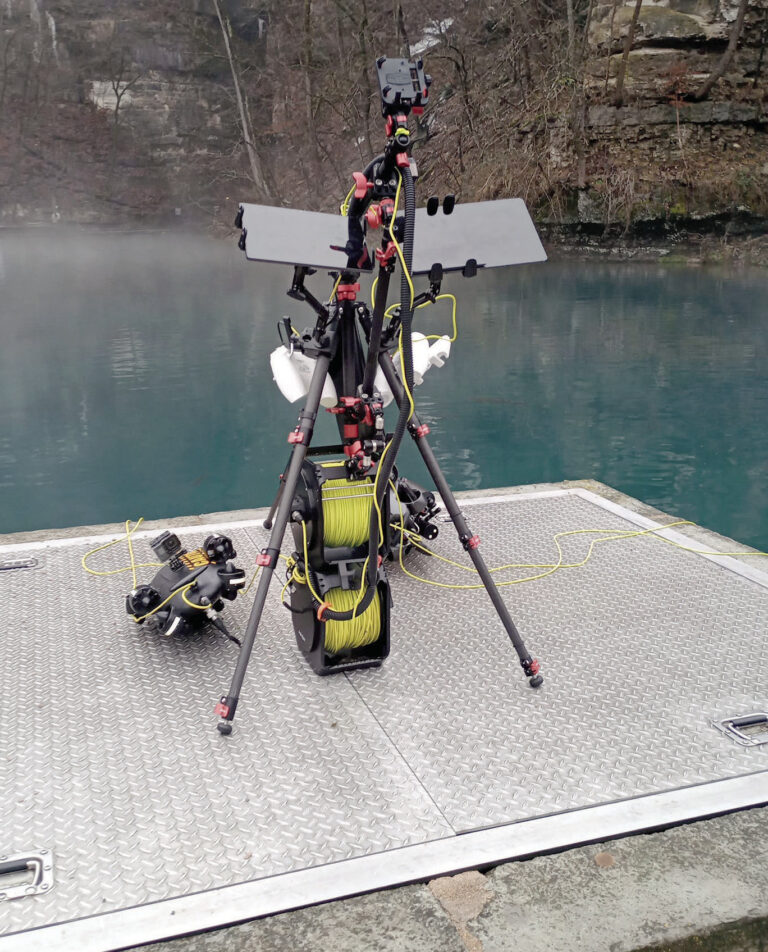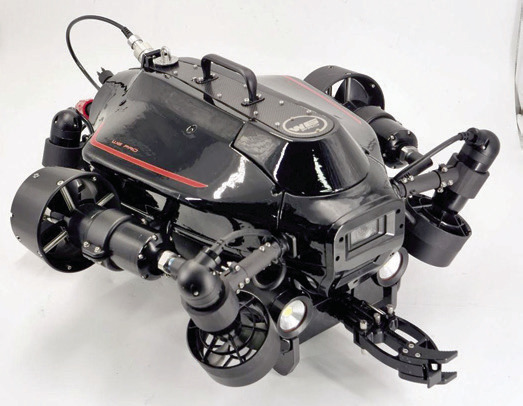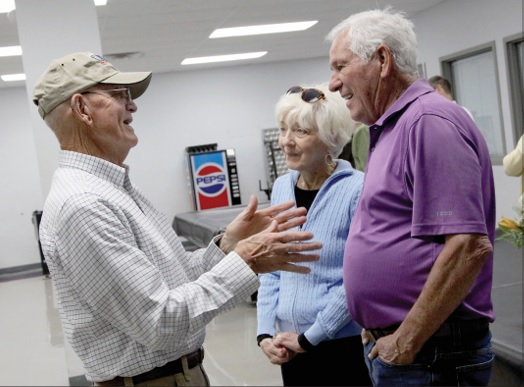Another way to dive; ‘underwater robots’ to explore spring cave


BY SHEILA HARRIS sheilaharrisads@gmail.com
Steve Haggitt has plans to dive into Roaring River Cave deeper than any person has been before – with remotely operated vehicles (ROVs).
Haggitt and a team of three additional divers will operate the ROVs – essentially, underwater robots – with the initial objective of providing a 3-D model of the upper room (Chamber 1) to the Missouri State Park system for interpretive and public display purposes.
The divers are volunteering their time and resources to the three-day project approved by the Missouri State Parks system, which must be completed prior to May 15.
“The first day, we expect the mapping effort will take four hours of bottom-time to accomplish the objective of video-mapping,” Haggitt said. “Two ROVs will be used for lighting, and one for filming. Prior to that task, one of the ROVs will enter the cave and place a sonar device near the back wall to provide a 3D sonar image of Chamber 1.”
According to Haggitt, a second ROV will place an acoustical GPS antenna in the water near the cave entrance.
“This will provide us with a GPS position of the ROV that’s filming,” he said.
Thirty-four transects will be filmed, at a distance of less than two meters from the walls. Each transect will overlap the one above it, for total coverage, Haggitt said. When the transects are complete, a software program will stitch the images together with the GPS coordinates, for the 3D model, Haggitt said.
Mapping the restriction — which Haggitt refers to as a “scour hole” — will be the team’s day-two objective in the cave. The team will use three ROVs to measure the restriction.
“[The restriction] will be modeled using lasers to measure internal distances and calculate the volume of the space,” Haggitt said.
Haggitt said measurements of water flow, direction and the depth of scour holes associated with that flow will be assessed.
Based on the average cubic foot per second water flow measured by the United States Geology Survey (USGS), Haggitt believes there’s more than one opening in the upper chamber allowing water to flow into it from below.
“Two hours are scheduled for the second day’s scour study,” Haggitt said.
“We’ll use the results of that study to determine if we will proceed with the third day.”
If conditions are favorable, day three will entail diving a vehicle through the restriction that lies at a depth of 225 feet, at the bottom of Chamber 1. That ROV, said Haggitt, has the capability of descending over 1,100 feet below the surface of the water.
“It’s a W6 hydrodynamic class 2 ROV, with 20,000 lumens of light and two 4K video cameras, and a depth limitation of 1,157 feet,” Haggitt said.
Haggitt said while the ROV doesn’t have human hands to assist in pulling itself through the restriction, it does offer greater sustained horsepower than a human.
According to Haggitt, the deep dive and ascent will use three ROVs: One in the restriction to direct the tether; one at the outside of the restriction in Chamber 2 that will use sonar to read the depth of Chamber 2; and the ROV that will perform the deep dive and ascent.
Haggit said the size of the ROV compared to the size of the restriction is not expected to present a challenge, but the strength of water flow may.
“I don’t plan to risk losing $100,000 of equipment, so if there’s any question of me not being able to make it through the restriction, and get back out, I won’t take a chance,” he said.
Haggitt, a resident of Prince of Wales, Alaska, owns a marine environmental consulting firm and has some 25 years of diving experience to his credit. Three of those years, he said, are with ROVs. He uses the robotic vehicles to perform underwater infrastructure inspections for government contracts — often in multi-level, confined spaces — and to assess the water quality and subsurface ecological conditions at pollutant discharge sites.
On a visit to Roaring River Spring earlier this year, Haggitt learned the story of the KISS Rebreathers dive team’s explorations of the spring.
“I wondered if one of my ROVs could make it farther down into the cave than the KISS team did,” he said.
In November 2021, the KISS Rebreathers dive team, led by Mike Young, owner and CEO of KISS Rebreathers USA, a rebreather manufacturing company based in Barling, Ark., achieved a depth of 472 feet, subsurface, in the cave. That depth established Roaring River as the deepest explored spring in the nation at that time. That record was later broken in a spring cave in West Texas.
Haggitt submitted his application to the Missouri Department of Natural Resources (DNR) in February, and it was approved in March.
According to the terms of the permit, Haggitt is to provide the park with a 3-D model of Chamber 1 for interpretive and display purposes; a video-derived, fly-through cave model for the public to explore; and a video of the air bells at the top of Chamber 2.
The bottom of Roaring River Spring (if accessed) and any additional passages discovered will be filmed and documented, states the permit, and ROVs must be tethered to outside operators positioned outside the cave, with no contact or direct disturbances made to cave surfaces.
Weather-permitting, Haggitt hopes to make the three-day ROV dive April 24-26.
DNR personnel will monitor the dive, Haggitt said.




